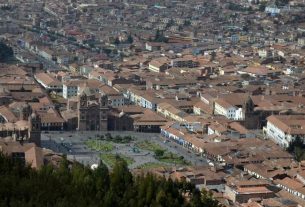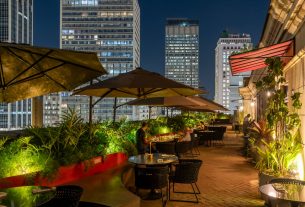A huge staircase on the side of a cliff. This is my greatest memory of Huayna Picchu, the mountain behind Machu Picchu and which appears in all the photos on the largest Peruvian postcard.
See the image below? The ruins, in the foreground, are the archaeological site of Machu Picchu, which is located on the mountain of the same name – an expression in Quechua, the ancient language of the Incas and other pre-Columbian peoples, which means “Old Mountain”. The mountain behind the ruins – much larger and more vertical – is Huayna Picchu. A term that, perhaps you guessed it, in Quechua means “young mountain”.
Well, in addition to visiting the ruins of Machu Picchu, every visitor needs to decide whether they will also take the trails that lead to the peaks of these two mountains. Tickets for these attractions are sold separately and there is a maximum number of people allowed per day and specific entry times, which requires the ticket to be purchased in advance, especially in high season. When I was in Machu Picchu, we had no doubts: we also decided to do the trail to the top of Huayna Picchu.
See too: Machu Picchu: our tips and trip report
How to buy entry to Machu Picchu
Cusco or Aguas Calientes? – Where to stay in Machu Picchu
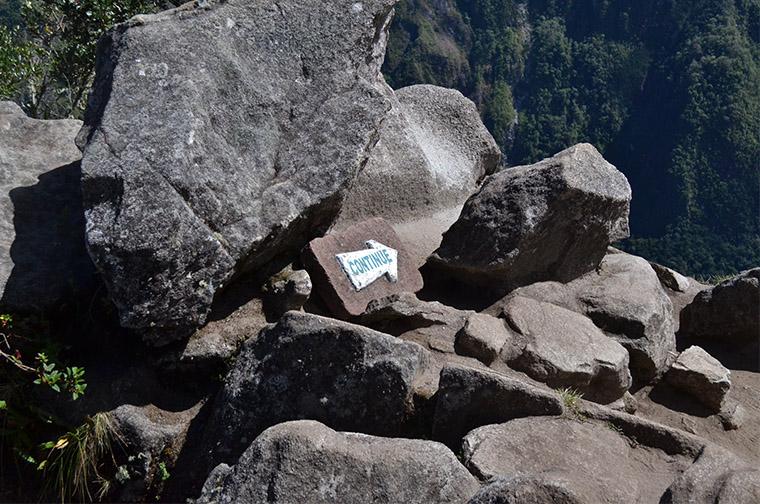
What is the climb like?
First of all, you need to buy the ticket. Choose one of two daily times, from 7am to 8am or from 10am to 11am. You won’t need to do the entire trail during this period, but no one enters after the closing time, not even with a ticket. In each of these windows, 200 people are allowed on the trail.
After entering Machu Picchu you will have to look for the trail entrance to Huayna Picchu. Therefore, the best option for anyone who decides to do the trail is to sleep in Aguas Calientes, get up very early the next day (before sunrise) and head to the Old Mountain. Be at the trail entrance at the scheduled time. Then just present your ticket, sign an attendance list, which you will sign again upon leaving, to ensure you didn’t get lost there, and start the trail.
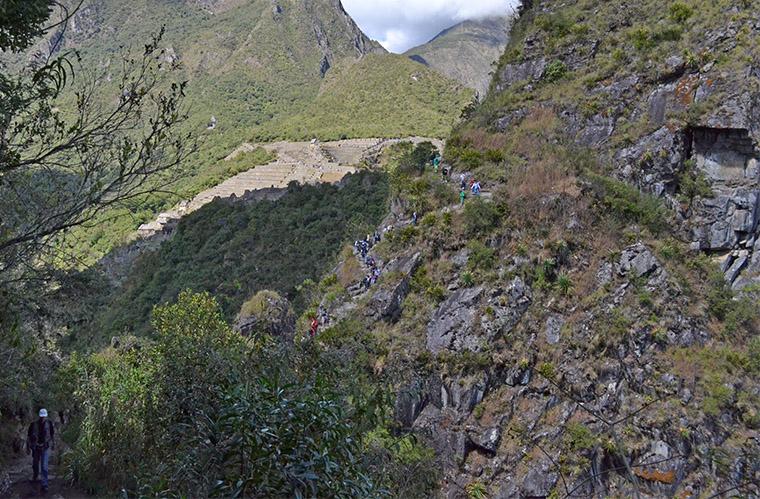
It doesn’t take long for a fork to appear: on one side is Huchuy Picchu, a small peak, with a much easier trail and which is also in the classic photo, while on the other is Huayna Picchu. We prefer to go straight to our main objective.
The climb is not easy. You will spend between 1h and 2h, depending on your pace, to reach the top. And take stairs! The mountain doesn’t lie – the climb is steep, requires knee strength and some physical conditioning. There are few stopping points for rest. Speaking of which, bring plenty of water – not just one bottle –, sunscreen and sunglasses. And remember that altitude makes everything even more complicated and seems to increase distances.
See too: How to deal with altitude sickness
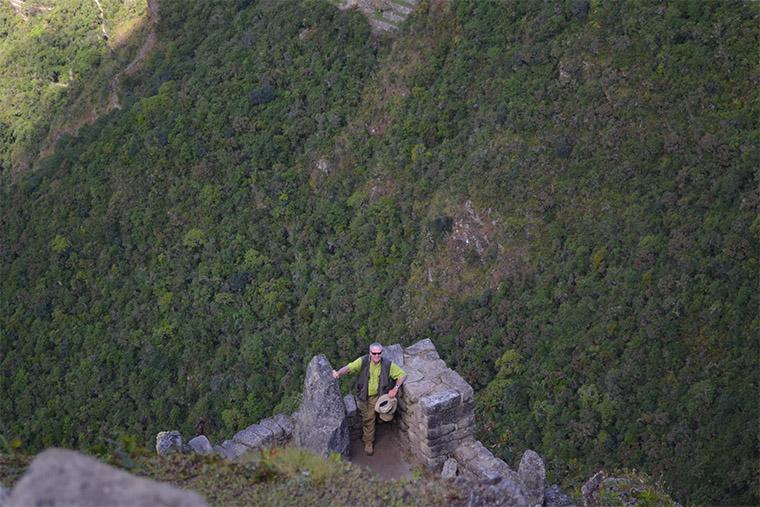
A tourist at that photo stop
Not that only people with up-to-date physical fitness can climb, of course. I, whose most common exercise is lifting beer glasses, managed to reach the top. And I even saw elderly people and teenagers there – some of them apparently less tired than me. In any case, think about your own fitness and health before tackling Huayna Picchu. Anyone who is afraid of heights should also think twice.
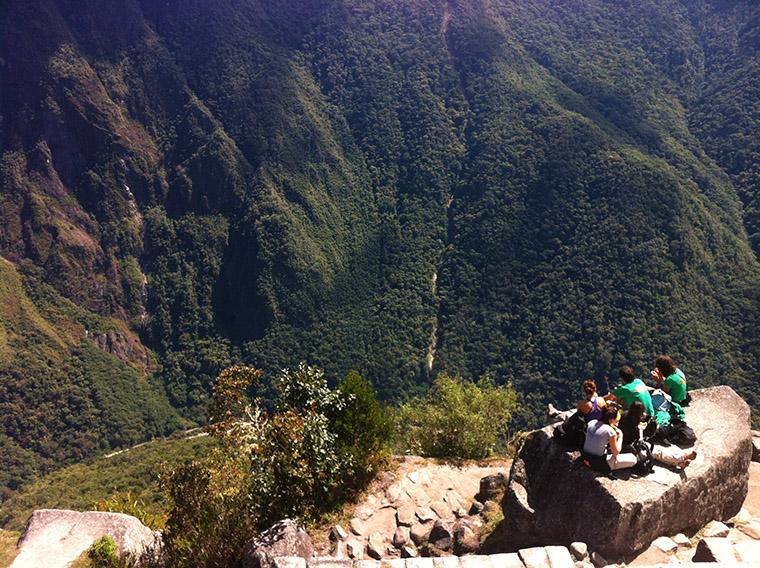
The thing is, in addition to the stairs, at times the route becomes even more vertical – and with a free fall, of thousands of meters, close to you, appearing at every corner. In several sections there are safety ropes, but in others this is not the case. The staircase I mentioned at the beginning of the text, for example, is at the beginning of the descent. You reach the top, you’re happy with the view and the achievement and, finally, you start to descend, only to come face to face with this place in the photo below.
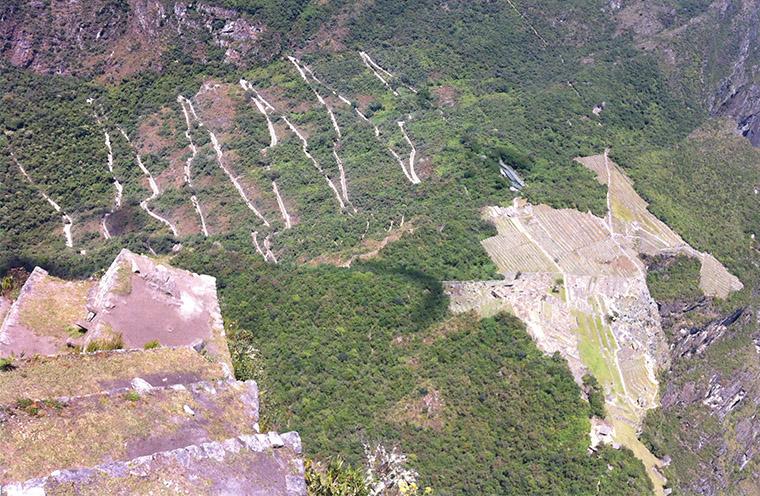
But before that moment there is the cave. Narrow, claustrophobic and at the top of the mountain, this cave is a source of fear for many people. I, who didn’t even know she would be there, was surprised. But I passed calmly. Once at the top, all you have to do is enjoy the moment and enjoy the view, which is different from that traditional photo of Machu Picchu. I don’t know about you, but to me the lost city of the Incas reminds me of a dog jumping.
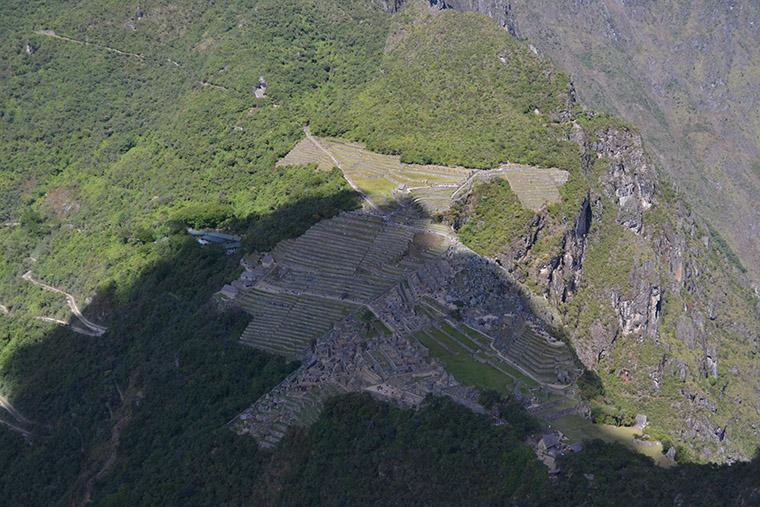
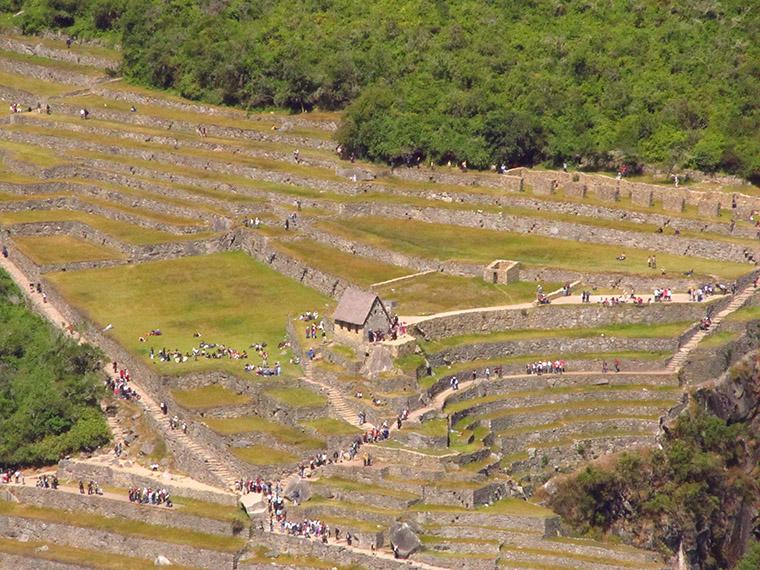
Now with camera zoom
After enjoying the view, I faced the scary staircase and started going down. Strength in the knees and incentives for those coming in the opposite direction, still trying to reach the top.
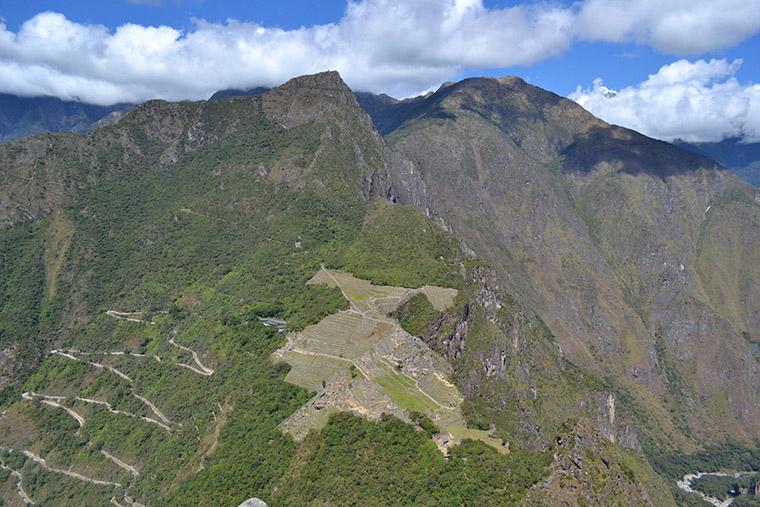
And so? It is worth it?
Look, I liked it. Very. It was tiring and challenging at times. Anyone who tends to have difficulties, such as the elderly, children and people with limited mobility, should think twice. And don’t just go by the photo: the best one is in the middle of the ruins themselves, down there, and not at Huayna Picchu.
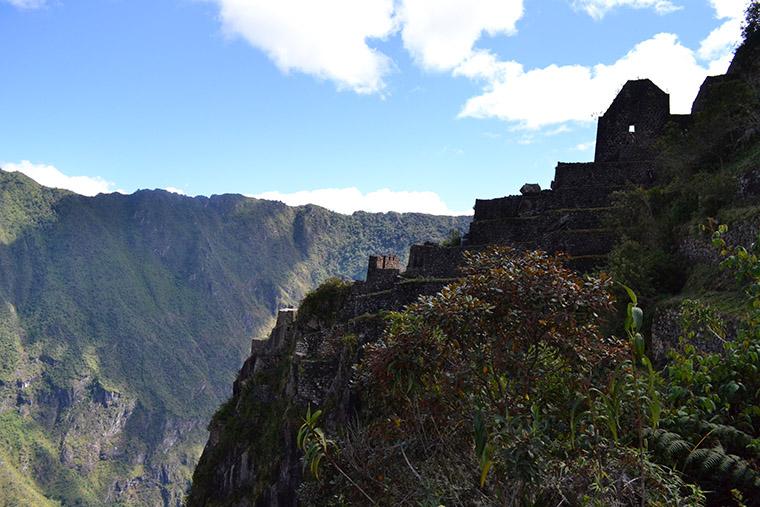
There are even some ruins at the top of the young mountain, but with so much down there, that’s not what makes the trip worth it. The trail is worth the trail itself and anyone who likes this kind of thing won’t regret it. Those who turn up their nose at trails, on the other hand, can be happy just at the Machu Picchu site, which already requires a lot of walking.
As I said at the beginning of the text, there is another, less popular trail that leads to the top of Machu Picchu mountain. As I didn’t do this, I won’t give an opinion, but Audmara did. You can find her report here. It took her three hours just to climb the mountain and took fantastic photos during the hike, including from that classic viewpoint of the ruins, with Huayna Picchu in the background. On the blog Porai e Por aqui there is a similar report, also with fantastic photos. I have already decided: if one day I visit the lost city of the Incas again, the trail will be Machu Picchu.
Are you going to travel? Travel Insurance is mandatory in dozens of countries and essential for any trip. Don’t be left unprotected in Peru. See how to get the best cost/benefit insurance with our discount code.
And you? Have you climbed Huayna Picchu or hiked to the top of Machu Picchu mountain? What did you think of the experience?
Sign up for our newsletter

Sign up for our newsletter and stay up to date with exclusive news
that can transform your routine!
Warning: Undefined array key "title" in /home/storelat/public_html/wp-content/plugins/link-whisper-premium/templates/frontend/related-posts.php on line 12
Warning: Undefined array key "title_tag" in /home/storelat/public_html/wp-content/plugins/link-whisper-premium/templates/frontend/related-posts.php on line 13

